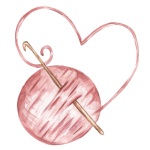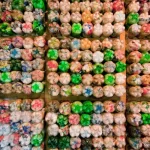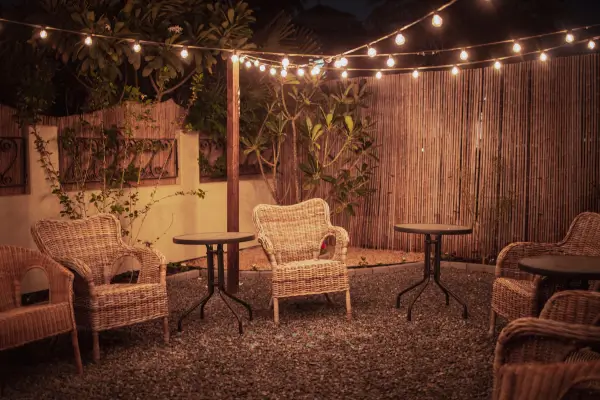DIY bird feeders using recycled materials are an easy and rewarding way to attract birds while giving new life to items you’d normally throw away.
From plastic bottles to wooden scraps, everyday materials can be transformed into creative feeders that support wildlife and reduce household waste.
This simple project connects you with nature and encourages a more sustainable lifestyle without requiring advanced crafting skills.
Even a small feeder can turn your yard into a vibrant, living space that brings joy and movement to your everyday routine.
In this article, you’ll learn step by step how to build bird feeders using recycled materials you already have at home.
Why Make Bird Feeders from Recycled Materials?
1. Environmentally Friendly
Reusing materials that would otherwise be thrown away reduces waste and supports a cleaner planet.
2. Cost-Effective
Homemade bird feeders require little to no investment since most materials are readily available at home.
3. Encourages Wildlife
Providing a food source helps local bird populations thrive, especially during colder months.
4. Fun and Engaging Project
This DIY activity is ideal for families, kids, and nature lovers, offering a creative and rewarding experience.
Materials You’ll Need
Gather the following recycled materials and basic tools before you start:
Common Recycled Materials:
- Plastic bottles (1-liter or 2-liter soda bottles)
- Milk cartons or juice cartons
- Tin cans (clean and label-free)
- Wooden scraps or old wooden boxes
- Used mesh bags (from fruits or vegetables)
- Twine, rope, or wire
Basic Tools:
- Scissors or utility knife
- Hot glue gun or waterproof glue
- Paint (optional, non-toxic)
- Drill (for wood feeders)
- Small sticks or dowels (for perches)
- Birdseed (sunflower seeds, millet, cracked corn, etc.)
Now, let’s explore different DIY bird feeder designs you can make using recycled materials.
1. Plastic Bottle Bird Feeder
How to Make It:
- Take an empty plastic bottle and remove the label.
- Cut two small holes on opposite sides, about 2 inches from the bottom.
- Insert a small stick or wooden dowel through the holes to serve as a perch.
- Cut two larger holes just above the perches for birds to access the seeds.
- Fill the bottle with birdseed.
- Tie a string or wire around the bottle neck and hang it from a tree branch.
Best For:
- Small songbirds like finches, sparrows, and chickadees.
Pro Tip:
- Use a funnel to easily pour birdseed into the bottle without spilling.
2. Milk Carton Bird Feeder
How to Make It:
- Clean and dry an empty milk carton.
- Cut a large opening on one side, leaving a 1-inch border.
- Poke a hole below the opening and insert a small stick or dowel for a perch.
- Decorate the outside using non-toxic paint if desired.
- Fill the feeder with birdseed and hang it using twine or wire.
Best For:
- A variety of birds, including robins and blue jays.
Pro Tip:
- Make the feeder more weather-resistant by sealing the edges with clear tape or a thin coat of waterproof varnish.
3. Tin Can Bird Feeder
How to Make It:
- Take a clean tin can and remove any sharp edges.
- Paint or decorate the outside if desired.
- Punch two holes near the rim on opposite sides and attach a string for hanging.
- Fill the can with birdseed and position it horizontally on a tree or pole.
- Glue a stick inside the bottom edge to provide a perch.
Best For:
- Small and medium-sized birds such as wrens and titmice.
Pro Tip:
- Hang multiple cans at different heights to attract various species.
4. Wooden Scraps Bird Feeder
How to Make It:
- Use leftover wooden scraps to create a small rectangular box.
- Drill drainage holes at the bottom to prevent water buildup.
- Attach a wooden roof to protect the seeds from rain.
- Hang the feeder using wire or attach it to a wooden post.
Best For:
- Larger birds like cardinals and woodpeckers.
Pro Tip:
- Place a suet cake inside during winter for added energy-rich feeding.
5. Mesh Bag Bird Feeder
How to Make It:
- Reuse an old mesh produce bag (like those used for onions or oranges).
- Fill the bag with birdseed or suet.
- Tie the top securely and hang it from a tree.
- Birds can peck through the mesh to access the food.
Best For:
- Clinging birds like woodpeckers and chickadees.
Pro Tip:
- Use a double layer of mesh to prevent seeds from falling out too quickly.
Placement Tips for Bird Feeders
- Hang feeders at least 5 feet off the ground to prevent predators from reaching them.
- Place feeders near shrubs or trees to provide birds with shelter and a safe escape.
- Keep feeders away from windows to prevent bird collisions.
- Regularly clean feeders to prevent mold and bacteria buildup.
Common Mistakes to Avoid
- Using Toxic Paints – Always use non-toxic, bird-safe paint for decorating feeders.
- Not Providing Drainage – Make sure feeders have small holes at the bottom to drain water.
- Ignoring Placement – Keep feeders in a safe location where birds can feed undisturbed.
- Not Refilling Regularly – Birds rely on consistent food sources, so refill feeders as needed.
- Leaving Sharp Edges – Smooth out any cut plastic or tin edges to prevent bird injuries.
Final Thoughts
Making DIY bird feeders using recycled materials is an easy and rewarding way to support local bird populations while being environmentally conscious. Whether using plastic bottles, milk cartons, tin cans, wooden scraps, or mesh bags, you can create an inviting feeding station for a variety of bird species.
Start your own DIY bird feeder project today and enjoy watching birds visit your yard while knowing you’re contributing to a greener planet!



